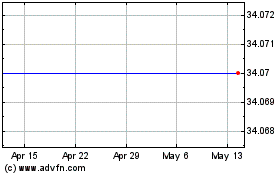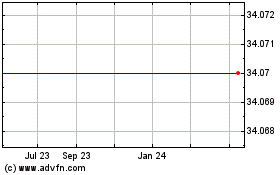Despite macroeconomic headwinds primarily resulting from the weak
jobs market, the U.S. rating downgrade in the summer, the ongoing
sovereign debt crisis in Europe, and fears of a double-dip
recession in the U.S. until about a few months ago, the Real Estate
Investment Trust (REIT) industry outperformed the overall stock
market in third quarter 2011, albeit with lesser-than-expected
returns. The FTSE NAREIT Equity REIT Index had total returns of
-14.7% in third quarter 2011 versus -15.3% and -15.5% for the
Russell 3000 Index and the S&P 500 Index, respectively.
A combination of factors has helped the REIT industry to stand out.
During the crest-to-trough period of 2007 to 2009, REITs took on
far less debt than private real estate investors, and many were
able to sell at the top of the market when private equity investors
were still buying.
Importantly, during the downturn, REITs were able to acquire
properties from highly leveraged investors at deeply discounted
prices. This enabled them to add premium high-return assets to
their portfolios.
Furthermore, REITs managed to raise capital to pay off debt, owing
to a large inflow of funds as institutional investors allocated
more "dry powder" to the industry, making them an increasingly
attractive investment proposition. For the first nine months of
2011, REITs raised $43.4 billion in equity and was well on course
to either match or surpass the $47.5 billion in equity raised in
2010.
According to data from NAREIT, leverage ratio of listed REITs
(total debt against market capitalization) as of September 30, 2011
was 38% -- significantly lower than 51% at the end of second
quarter 2008 prior to the Lehman Brothers collapse due to the Great
Recession.
In addition, REITs typically have a large unencumbered pool of
assets, which could provide an additional avenue to raise cash
during crises. Consequently, industry experts believe that REITs
are comparatively better equipped to continue outperforming the
broader market and currently have the wherewithal to withstand
another recession in the future.
Investors looking for high dividend yields have historically
favored the REIT sector. Solid dividend payouts are arguably the
biggest enticement for REIT investors as the U.S. law requires
REITs to distribute 90% of their annual taxable income in the form
of dividends to shareholders. The dividend yield for the FTSE
NAREIT All REIT Index by the end of third quarter 2011 was 5.2%
compared to 1.9% for the 10-year U.S. Treasury Note.
The standout performance in the REIT industry (year-to-date as of
December 7, 2011) was that of the Self-Storage REITs (a total
return of 30.35% as measured by the FTSE NAREIT Equity REIT Index),
followed by Regional Malls (17.75%), Residential (9.07%), and
Health Care (7.03%). The relatively underperforming sectors were
Lodging/Resorts (-16.31%), and Industrial (-6.28%) REITs.
Moving forward, limited supply of new construction coupled with the
growing demand for high-quality properties bode well for the
earnings prospects of REITs, in particular those that have assets
in high barriers-to-entry markets. According to reports, new
construction is currently averaging 390 million square feet per
year, compared to 1 billion square feet per year in the decade
prior to the global financial crisis. As a result, REITs presently
are heavily dependent on inorganic growth to fuel their expansion
drive.
OPPORTUNITIES
We are bullish on
Public Storage (PSA), the
largest owner and operator of storage facilities in the U.S. The
company has significantly increased the scale and scope of its
operations through the acquisition of Shurgard Storage Centers that
had a considerable presence in the European markets. Although
Public Storage currently owns a 49% stake in Shurgard, the size and
scope of its operations have enabled it to achieve economies of
scale, thereby generating high operating margins and managerial
efficiencies.
The "Public Storage" brand is the most recognized and established
name in the self-storage industry, with a presence in all the major
markets across 38 states in the U.S. In addition, the storage
facilities of the company have a high visibility and are usually
located in densely populated areas that improve the local awareness
of the brand. This offers a significant upside potential for the
company.
Another stock worth mentioning is
Taubman Centers
Inc. (TCO), which owns, develops and operates regional and
super-regional shopping centers throughout the U.S. and Asia.
Retail shopping centers spanning over 400,000 square feet of gross
leaseable area (GLA) are generally referred to as "regional"
shopping centers, while those centers having in excess of 800,000
square feet of GLA are generally referred to as "super-regional"
shopping centers.
Taubman focuses on dominant retail malls that command the highest
average sales productivity in the U.S., measured in terms of mall
tenants’ average sales per square foot. On a trailing 12-month
basis, mall tenant sales were $615 per square foot during third
quarter 2011. In addition, a large number of these shopping centers
are strategically located in the most affluent regions of the
country, which include Los Angeles, San Francisco, Denver, Detroit,
Phoenix, Miami, Dallas, Tampa, Orlando and Washington DC. This, in
turn, enables the retailers to target high-end upscale customers
and maximize their profitability.
We also remain bullish on
Avalonbay Communities,
Inc. (AVB), one of the best-positioned apartment REITs,
primarily focused on developing multi-family apartment communities
for higher-income clients in high barrier-to-entry regions of the
U.S. Avalonbay has Class A assets located in premium markets, such
as Washington DC, New York City and San Francisco, where the spread
between renting and owning is still high despite home price
declines.
As ‘echo boomers’ (the children of baby boomer generation) opt to
move out on their own and more renters decide to part ways with
families and roommates, the single-family homeownership rate across
the U.S. has persistently declined and the demand for multifamily
rental apartments has seen a surge. With new supply remaining muted
until late 2013 or 2014, we expect the performance of the
multifamily sector as a whole and Avalonbay in particular to remain
comparatively stable in the coming quarters, as renting has emerged
as the only viable option for customers who could not procure
mortgage loans or are unwilling to buy a house at present.
In addition, Avalonbay has a reasonably strong balance sheet with
moderate near-term debt maturities and adequate liquidity.
Consequently, the company can capitalize on potential acquisition
opportunities due to distressed selling from owners and developers
who cannot refinance their properties that augur well for its
top-line growth.
WEAKNESSES
A significant chunk of REITs are raising capital through property
level debt and equity offerings. Although both debt and equity
financings provide much-needed cash infusions, these could
potentially burden already leveraged balance sheets and dilute
earnings. Property level debt is also harder to obtain and more
expensive, as commercial real estate prices remain under
pressure.
We are bearish on
Host Hotels & Resorts, Inc.
(HST), the largest lodging REIT and one of the largest owners of
luxury and upper-upscale hotels. The majority of Host Hotels’
properties are concentrated in the luxury and upper-upscale
segments, which was the weakest performing segments during the
economic downturn. While the outlook for these markets has
improved, the pace of improvement remains quite uneven and
unsteady.
The hotel industry is also cyclical in nature, and is heavily
dependent on the overall health of the U.S. economy. Unfavorable
macroeconomic conditions in the past has compelled customers to cut
back on discretionary spending and prefer lower priced brands over
premium ones. Consequently, demand for Host Hotels had reduced
comparatively and if the trend reoccurs in future, the bottom line
of the company is likely to be affected, reducing its operating
margins.
We also remain skeptical about
Prologis Inc.
(PLD), the erstwhile AMB Property Corp. that acquires, develops,
operates and manages industrial real estate space in North America,
Asia and Europe. Although the quarterly results were in line with
the company’s expectations and signified a gradual improvement in
market fundamentals, macroeconomic issues have contributed to a
slower pace of recovery.
The credit crunch has also widened the bid-ask spread between
buyers and sellers of commercial real estate, causing deal volumes
to fall from pre-recession levels. In addition, market vacancy
increases will mitigate Prologis’ ability to push through rental
rate increases. This has significantly affected the long-term
growth of the company.
AVALONBAY CMMTY (AVB): Free Stock Analysis Report
HOST HOTEL&RSRT (HST): Free Stock Analysis Report
PUBLIC STORAGE (PSA): Free Stock Analysis Report
TAUBMAN CENTERS (TCO): Free Stock Analysis Report
To read this article on Zacks.com click here.
Amb Properties (NYSE:AMB)
Historical Stock Chart
From Mar 2024 to Apr 2024

Amb Properties (NYSE:AMB)
Historical Stock Chart
From Apr 2023 to Apr 2024
